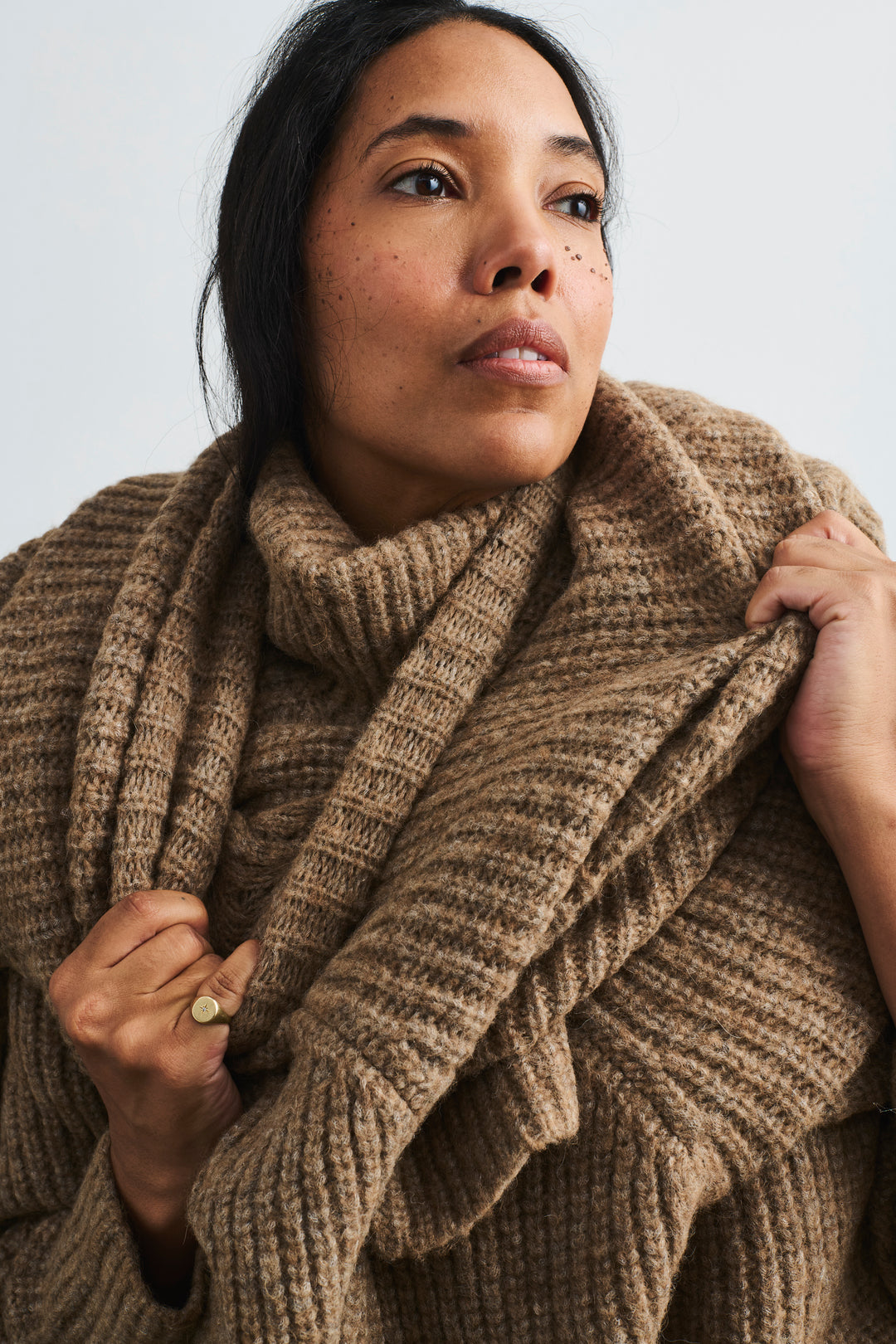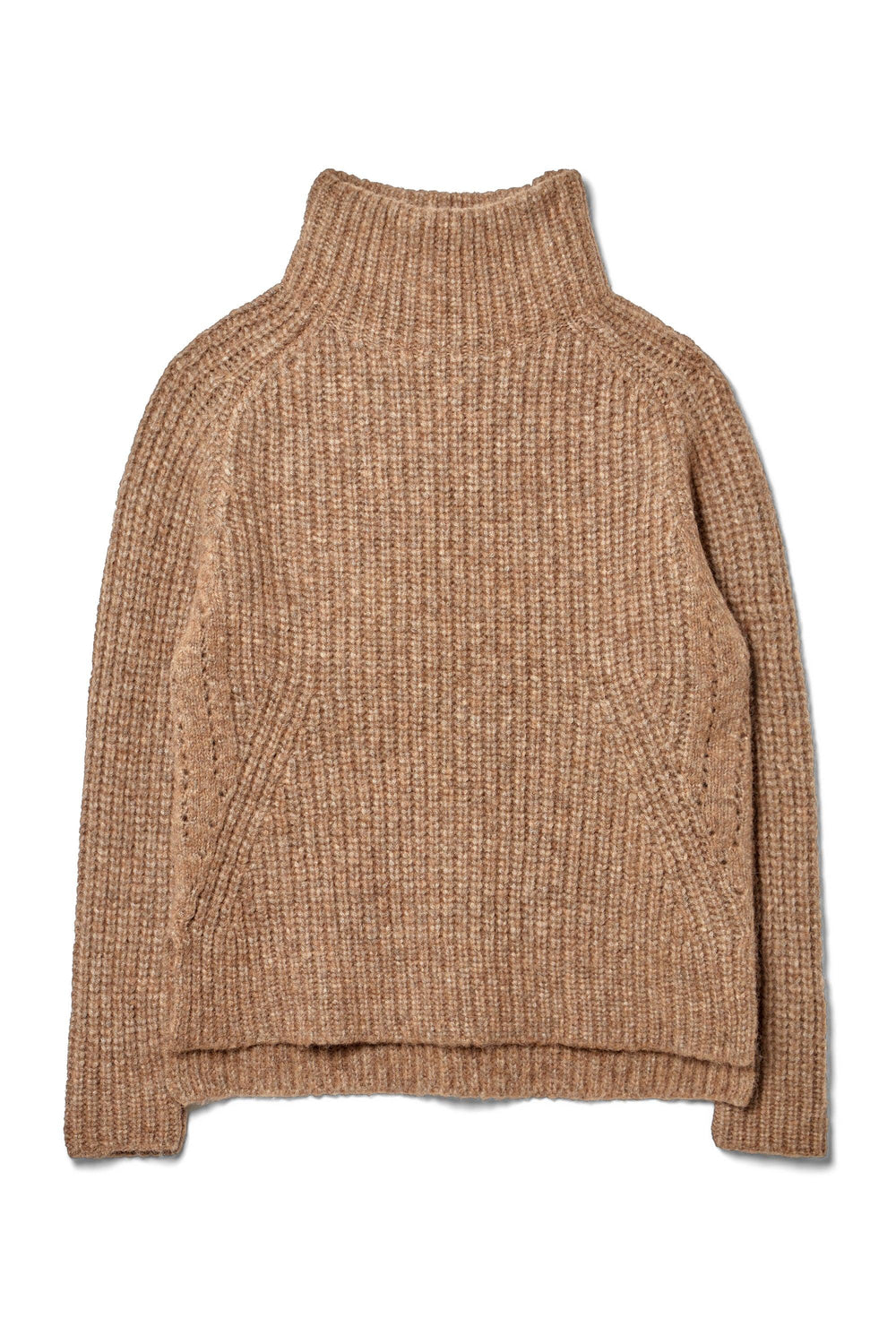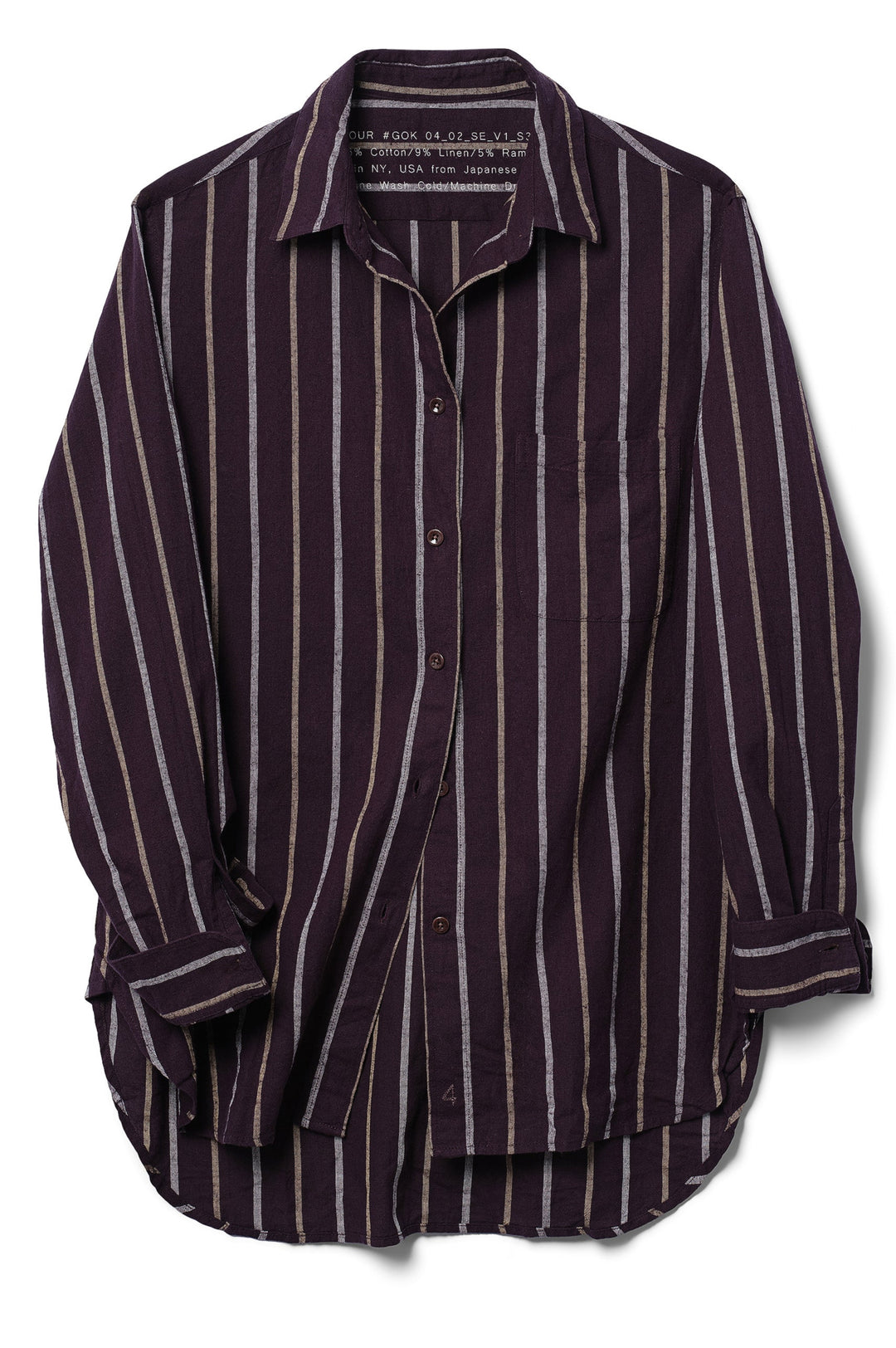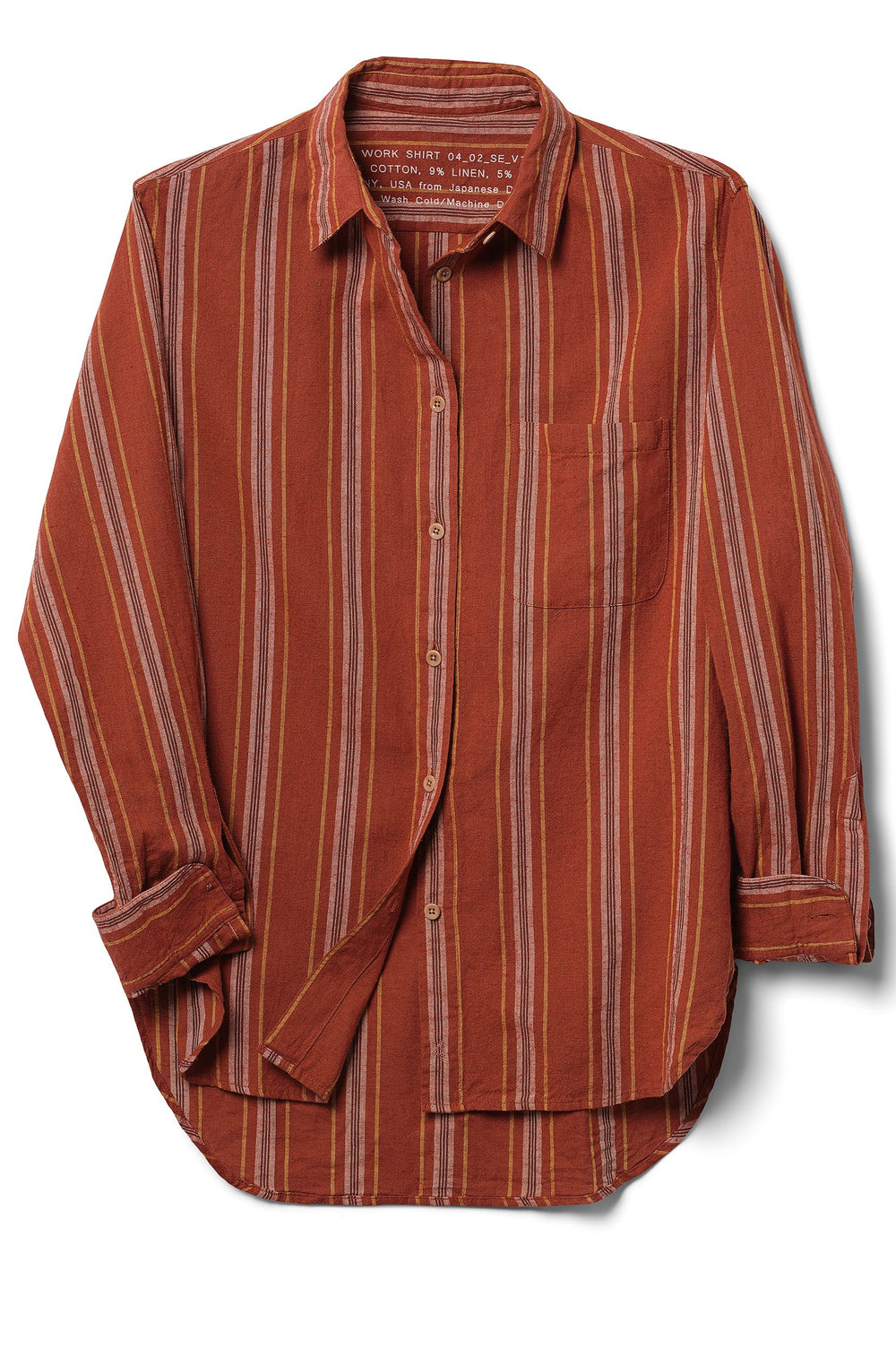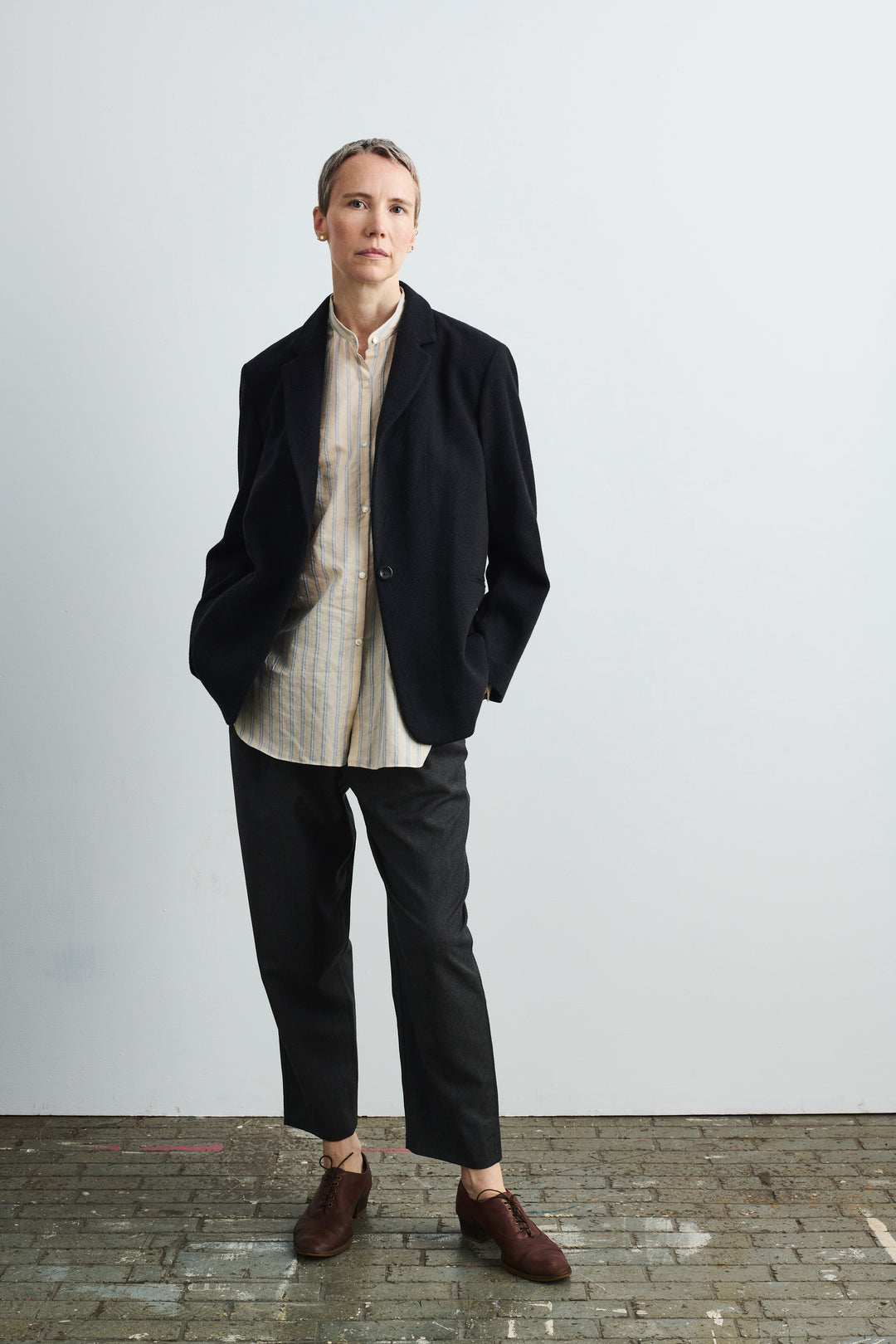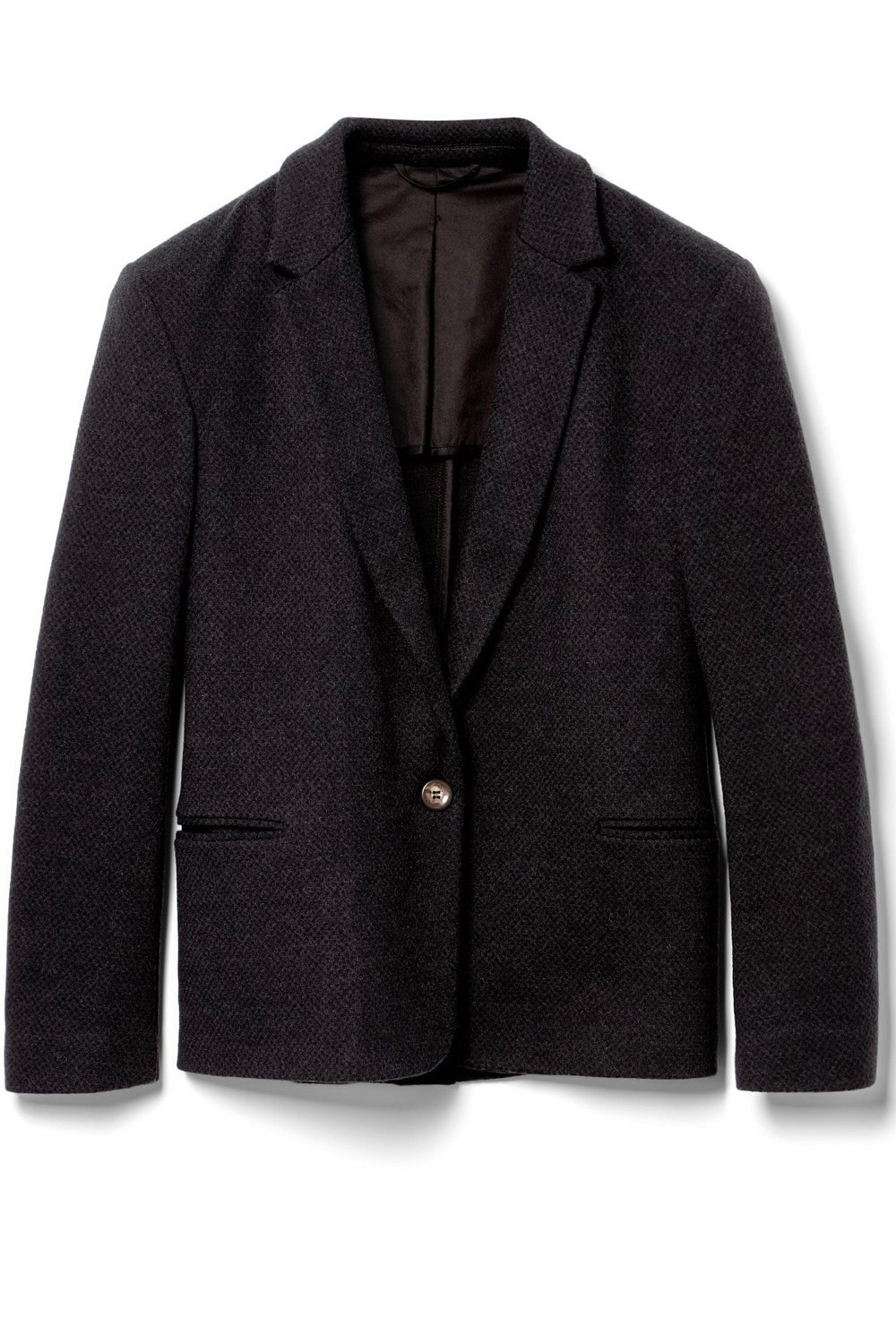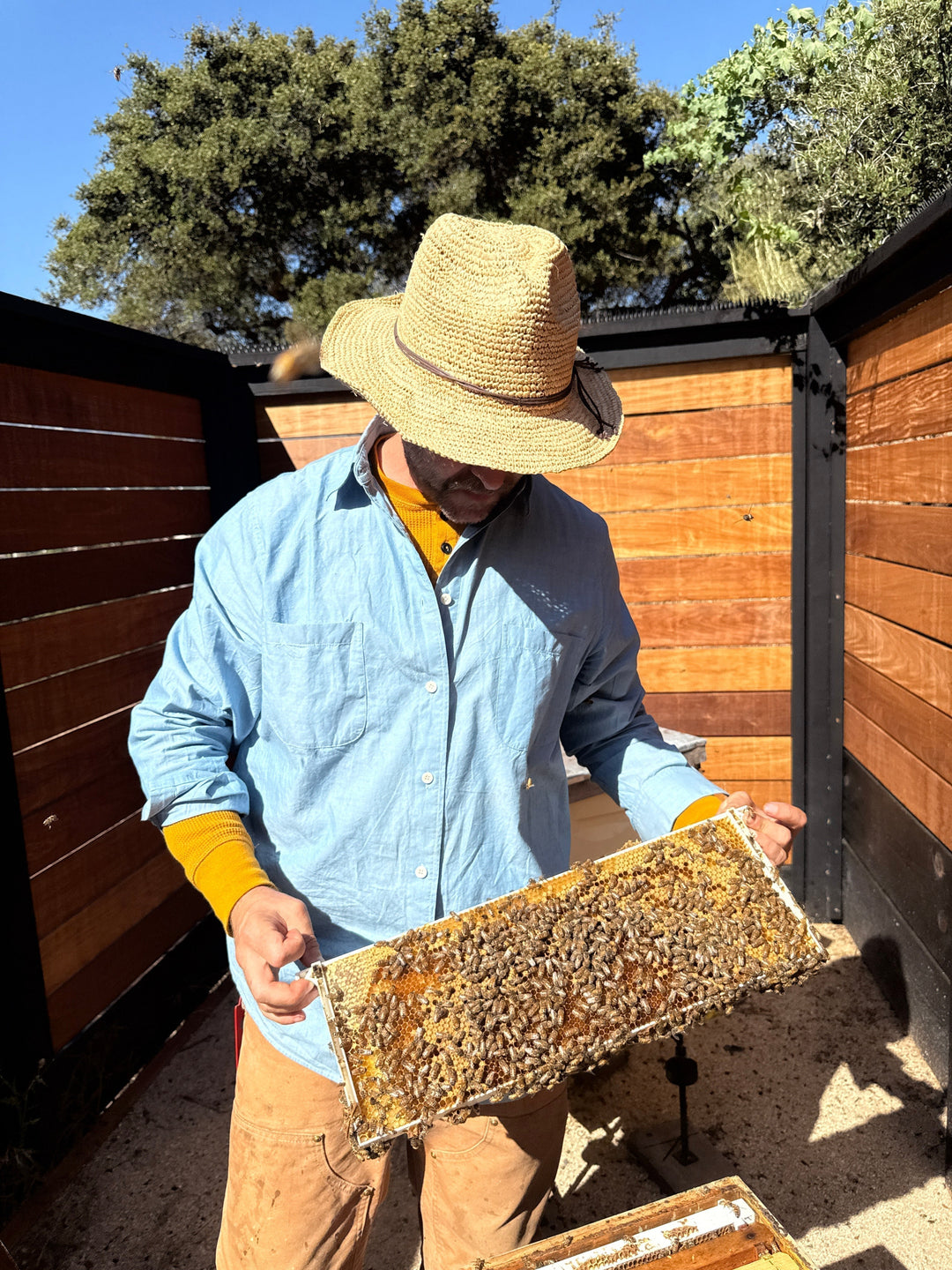Celebrities2Us: Cate Havstad
Cate Havstad
Hatmaker, Farmer, Leather Crafts Worker, Designer, Artist, Mother, Lover and Conservationist... we're obsessed!
4: We are so excited to learn more about both Casad Family Farms and Havstad Hat Co. Can you introduce us and share a bit about your background?
Cate Havstad: I grew up in Northern California in a small coastal town called Occidental. I’ve got two badass sisters out in the world doing pretty incredible work and was raised by two incredible parents who always worked for themselves. Whether they meant to or not, they instilled a lot of the entrepreneurial spirit in me and my sisters. I went to college at UC Santa Cruz and was aimless in my studies. For some time, I thought I was going to be Jane Goodall -
I wanted to study primates in the field - so I got my bachelor's degree in physical anthropology with an emphasis on primatology. Naturally, this is why I became a hatmaker.
During my journey in college, I did take a couple of breaks. I studied abroad in Argentina, and then I took an informal break traveling and working for a farm-to-table organization called Outstanding in the Field. We went all around the United States, hosting dinners on different farms and ranches. I was always surrounded by agriculture, but that was my first experience seeing both young and older people doing it in a lot of different ways. It stuck with me.
I eventually made my way back to school to finish my degree. After college, I had one goal, and it was to ride horses every day, so I took a job as a wrangler in Central Oregon, which is far more glamorous-sounding than it really is. Fast forward, I needed to get my hat fixed up, and in a long, roundabout way, that's how I ended up finding my first hat-making mentor. I approached a hat maker in 2012 and I started working with him sometime in early 2013. It started with just fixing up my hat, and then I asked him if I could just keep showing up. I would work in the morning at the barn, and then after I was done with trail rides, I would make my way over to my first mentor shop and work with him.
I was just having fun and posting pictures of the hats I was building and people started getting very excited about what I was doing. Some asked me if I would build them a hat and that’s how the hat-making business started.
Honestly, I fell into it and I enjoyed the tactile nature of the work. I like that it's about both beauty and function.
4: Was there one specific moment that you had where you realized this passion for hat-making could transition into a business or was it something that happened gradually?
Cate: Definitely. I did my first public show around June 2014. I had built a collection of hats that I would display there and planned on also taking some custom orders. It was at a venue in central California called Bandit Town. I was setting up my little wall of hats and I had two women show up before the event had even started. They each bought a hat off the wall and ordered custom hats as well. It was my first real sale, four all at once, and I just thought to myself, they knew who I was. That day was just awesome. It was practically a sell-out.
A sweet anecdote - I was there with one of my oldest best friends named Stryker. When the day was done and we were starting to pack things up, he was sitting on the edge of the porch, and he looked kind of bummed. I thought to myself, oh man is he just annoyed that I made him work so hard today? I sat next to him and said, “Are you okay? Are you mad?,” and on the verge of crying, he replied, “I'm just so proud of you. You're doing it.” He is still one of my very best friends and has been on most of my adventures to find equipment.
 4: You touched on something - the farm-to-table organization that you worked with, and shared a bit about the farming that you do currently. We would love to hear more about that - how you got into farming and what has inspired Casad Family Farms.
4: You touched on something - the farm-to-table organization that you worked with, and shared a bit about the farming that you do currently. We would love to hear more about that - how you got into farming and what has inspired Casad Family Farms.
Cate: After I finished Outstanding in the Field, I wasn't engaged with farms for a couple of years. Then, I landed in Central Oregon, where I was working as a Wrangler and at the same time in my first apprenticeship for hatmaking. A friend took me out to a biodynamic farm where she wanted to pick up some honey. I wasn't planning on buying any honey but I showed up and was met by an extremely handsome farmer. I was like, well I definitely need some honey now. I didn't have my wallet with me but I did have a checkbook, so I wrote a check for $25 for the jar of honey.
Yeah, I just wanted to get super rich so I decided I’d also like to be a farmer.
Being a wrangler and apprenticing for free at a hat maker's workshop doesn't make any money, and I was extremely broke at the time. Embarrassingly, my $25 check to the farmer for the jar of honey bounced. The farmer had to call me and tell me that, and knowing I was very poor he asked if I'd be interested in doing a trade. We did a trade so I made him a hat, and he gave me a CSA share at the farm, and part of that was coming out to help with harvest days. So I started showing up to help harvest on that guy's farm. Fast forward, he becomes my boyfriend and now my husband.
4: We were hoping that's where the story would be going!
Cate: At the time that I started volunteering on the farm things were picking up with the hat company, and there was a lot of excitement around it. There was a period of time when there was an offer that seemed too good to be true (and it turned out to be too good to be true). A wealthy developer had offered to build me my dream hat workshop in Nashville. It was a very sparkly offer, and I thought that I was going to move to Nashville and be Cate, the Hatter in Nashville. Meanwhile, I was going out to the farm every week to help harvest, and I fell in love not just with the farm. At that point, I wasn't dating Chris yet, we were just friends.
As I was working on the farm, I enjoyed the people that the farm attracted and the pace of things - it honestly was where I felt most at home.
I was planning the move to Nashville - I had this whole road trip planned where I was going to go across the country and build hats all across the country. I did all these pop-ups as we went along from Colorado to New Mexico to Texas, finally landing in Nashville. We actually did it. But as I was looking at the path ahead of me with Nashville, I realized it was in Oregon where my body was feeling my best. When I arrived in Nashville, I had the conversation with Chris. I said, “Let's stop messing around. Let's do this.” And we turned it all around and came back to Oregon.
4: It seems like there's such a serendipitous element with both the farming, starting with a bounced check, and Havstad Hat Co. We read that your dog had chewed up a treasured hat of yours and that's what inspired your foray into hat-making. It’s really neat how some of these almost accidental life experiences end up becoming our lives and shaping them too.
Life is just a culmination of all these moments. I often find I have to walk down a path for a certain amount of time to feel and understand in my body that it’s not right, and then course correct. It still happens now - I constantly have to choose the farm in a lot of different ways, but it's always where my heart comes back to.
4: It struck us that both Casad Family Farms and Havstad Hat Co are built with such a clear and shared level of both care and consideration. Hearing about closed-loop farming and how you start with the seed on the farm has similarities to how you start with raw materials to create each hat. Can you share the parallels you found between these two businesses, whether it's in process or overarching philosophy? Were there any similarities that surprised you about both of these?
Cate: There's this quote that my dad turned me on to from Irish Sandpearl that says “the ends do not determine the means, the means determine the ends.” I feel like that is a quote that encapsulates how I do things with Havstad Hat Co and on the farm. We have to make these work as businesses.
There is no sustainability for the farm or the business if you don't have financial sustainability; we have to have that to do the good work we're trying to do. With that being said, we don't let the financial ends determine means that might be damaging to place or people.
That's the most common thread. They are both also very hands-on businesses. They're very engaged, and very much a reflection of that.
In terms of parallels that surprised me, well, they're both about art and vision. I don't think many people think about farming as art. But when I watch my husband work, he is an artist.
I would call most farmers we interact with, conservation farmers, and artists. What farmers work with as a blank canvas is their land. How they conceptualize what that land will become, and how they then execute their work, is as much a craft as hat making.
4: Wow, that was beautiful, and such an important thing to remember when it comes to farming. We love that reference to the land as a medium.
Cate: It's more difficult because you get to harvest once a year and if you don't do so well, you wait a year to try again. So the patience involved in farming is above and beyond anything else I do. Limits inspire creativity. I like the limited medium of my felt and the work that I do in my hats. I could branch off into all these different areas of millinery but I've chosen my lane and my medium. I think that's been beneficial for the hat business. I also limit my production hugely, which has brought me a lot of freedom in my life to do other things. I’ve looked at scaling and decided I wanted to keep it small.
Honoring limits is one of the most beneficial things that you can do for the long-term health of your system.
 4: We agree, honoring limits is one of the main reasons that FOUR is a slow fashion brand. Speaking about what inspires you and your creativity, can you share more about where you seek design inspiration?
4: We agree, honoring limits is one of the main reasons that FOUR is a slow fashion brand. Speaking about what inspires you and your creativity, can you share more about where you seek design inspiration?
Cate: I find the most inspiration in the regional style of working with agriculturalists, whether it's actual cowboys, or just anybody living on and with the land. There’s a long lineage of deep care for quality materials and quality-built products. Cowboys spend the most money on their boots, their saddles, and their hats.
They may not have a lot of money but they are going to spend for the best quality - items they will have forever. In a world of very disposable fashion, I appreciate the Western culture's reverence for heritage goods that will last you a lifetime and beyond.
Western culture is the basis of my style inspiration for those reasons. Not just because you look cool (although you do look cool).
4: We didn't realize we were going to like you so much! The most exciting thing about this to us is our parallel inspiration in quality, form, function, and tradition. We don't know a lot about the culture of the American West, so this is riveting.
Cate: I think that's why I was so attracted to FOUR - I would rather have two to three shirts in my closet and feel like I don't need or want anything else.
My muses are these ranch women - they're so tough, so resilient, and their style is always impeccable.
It's great denim, great boots, a silver belt, a sharp white collared shirt, and then a stunning felt hat. These ladies are timeless and super American.
4: Tough, resilient and stylish, we're in! Is there anything else you’d like us to know?
Cate: One thing I wanted to add is about the leather project, Range Revolution. It's a whole other side of things, but it ties into honoring the land stewards who are doing the environmental work day to day in this world.
We're in a sort of unique time where I think that there's a misunderstanding about the role that ranchers play in the world. When you sit on my side of things, you see that some of these ranchers you work with are some of the greatest conservationists you've ever met. There is a narrative out in the world that talks about it completely opposite of what I know. It's frustrating and it's hard to educate people who are used to binaries of good and bad with leathers. We have such a massive and important industry of cattle in America, but almost all of the hides coming from family ranches like ours are thrown into the trash because we have done away with any mechanisms to aggregate and get them into the supply chain.
That's what Ranch Revolution was started upon - I wanted to source hides regionally for the people I know doing the good work. In trade, what the industry is building products out of is hides that typically come from Brazil. They're imported. There's no traceability and often they're products of deforestation of the rainforest. Where is the closed loop system locally?
I often think about how we can return to nature-based solutions.
The industry is currently spending billions of dollars on bio fabrics without looking at what's right in front of them, which is an entire supply chain of natural fibers - these cowhides - that are being incinerated. So it's rebuilding the mechanisms and subsystems to support the middle of the supply chain.
Inspired? Want a farm share? Want a traceable, transparent and regenerative leather bag? Follow Cate in all of her incredible ventures. @rangerevolution @casadfamilyfarms @havstadhatco
Want to WIN your very own custom hat and gift certificate from FOUR? We can help with that :) Enter to win here.














